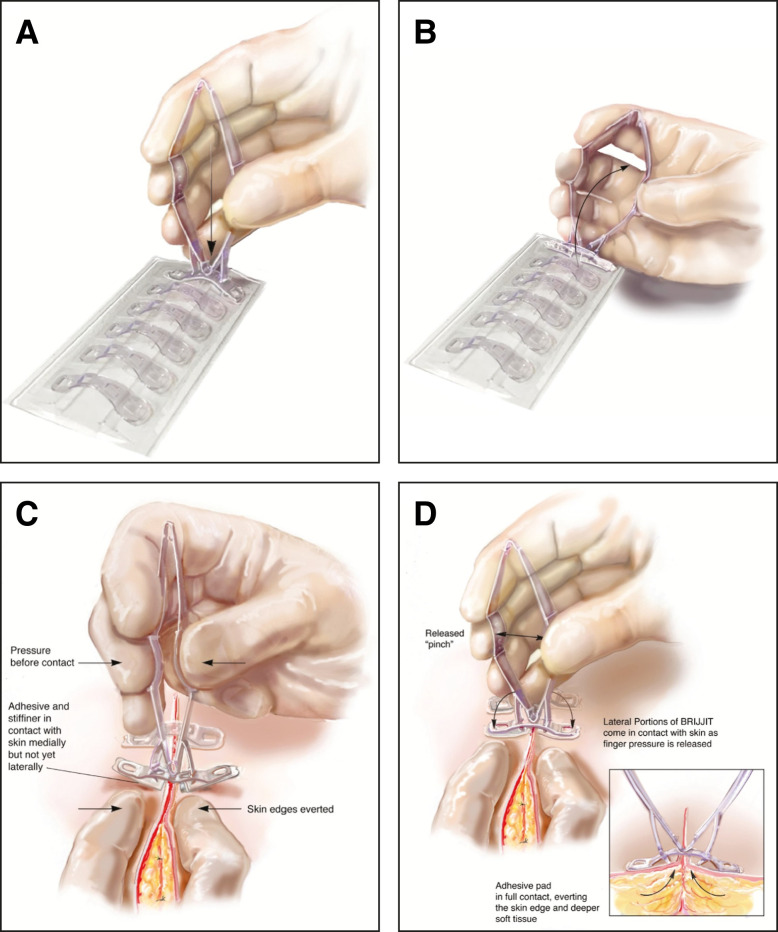Figure 1.
(A) The force modulating tissue bridge (FMTB) is loaded onto the applicator by inserting the catch arms into the central windows. The applicator is not compressed during the loading process. (B) To begin release of the FMTB from the loading tray, the attached applicator is pivoted toward either end of the loading tray. (C) To apply, the wound is held in approximation either with the fingers, as shown, or with forceps. The applicator is compressed, bending (preloading) the FMTB, and the preloaded FMTB is centered over the wound and lowered. The medial struts will be the first points of contact on either side. (D) With gentle pressure applied, the applicator compression is relaxed, allowing the lateral sections to rotate into position. Inset: Relaxation of the applicator produces a rotational movement with downward lateral force, combined with a medial movement, to produce an upward and inward force vector at the wound interface. These transmitted rotational forces produce eversion of the wound and mitigate tension of the superficial tissues. The applicator is now ready for removal. Figures produced by Bill Winn and reprinted with permission from BRIJJITCO, LLC/Brijjit Medical, Inc. Reprinted with permission from D. O. Kazmer and F. F. Eaves.26

